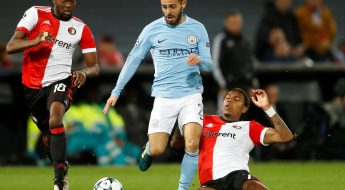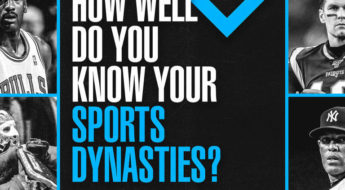How the Falcons can shore up their greatest weakness: pass-rusher
It’s no secret the Atlanta Falcons need pass-rush help. The numbers scream it.
Last season, the 7-9 Falcons had just 28 sacks — one of four teams to fail to reach 30 sacks along with the Lions, Seahawks and Dolphins. Over the past two seasons, the Falcons rank tied for 29th with 65 sacks, 35 fewer than the division-rival Saints had over that same time span. The Falcons rank dead last in pressure rate over the past two seasons at 22.9%. Those numbers have contributed to the Falcons allowing opponents to convert 44.3% of third downs — the fourth-worst third-down defense in the league in that time frame.
The Falcons might have solved some of their pass-rushing issues after installing Raheem Morris as defensive coordinator halfway through the season. The Falcons had just seven sacks in Weeks 1-8 — but they had 21 sacks in Weeks 9-17. Changing the complexion of the pass-rush personnel already has started with the team’s decision not to re-sign former sack champ Vic Beasley Jr., who had been extremely inconsistent since his breakout Super Bowl season.
Having Pro Bowl defensive tackle
1:34 Tedy Bruschi, Keyshawn Johnson and Dan Graziano pick the NFL teams that are in need of a pass-rush upgrade.
“Dante Fowler’s played himself, probably, into a different stratosphere,” said former agent Joel Corry, now a salary-cap and contract analyst. “Fowler had a pretty expensive one-year with the Rams. He made $13 million on a one, so he’s not going to sign $13 million on a long-term deal.”
Rather than paying perhaps $15 million-plus for the 25-year-old Fowler, the Falcons might be better off looking at an older but effective pass-rusher such as Robert Quinn, who turns 30 in May but had 11.5 sacks for the Dallas Cowboys last season. Pairing a veteran such as Quinn with another pass-rusher via the draft seems sensible, considering the team cut ties with Beasley and appears unlikely to pick up McKinley’s fifth-year option.
So what does Dimitroff think the market price will be for an impact pass-rusher?
“You know the ranges there,” Dimitroff said. “You could have a quality free agent who is shy of the double digits [less than $10 million per year]. You’re going to have a number [of players] who are going to be over double digits. There’s a wide range there, and they can still produce. I believe it’s all over the place.
“Part of your approach as an organization is to decide where you’re going to put your resources. If you think you can get somebody that can be shy of double digits and can produce for you like you would expect, then you make that move. Otherwise, you know that X Games analogy — ‘go big or go home’ — there’s some people that believe that.’’
• Most recent mock: Kiper » | McShay »
• Kiper’s Big Board » | McShay’s Top 32 »
• First Draft podcast » | Draft order »
• Full class rankings from Scouts Inc. »
More NFL draft coverage »
In terms of the draft, it’s highly doubtful the Falcons would pay the price required to move up from No. 16 to grab Ohio State’s Chase Young, who’s the best pass-rusher in the class. One general manager said that after Young, the pass-rushers he believes are worthy of consideration are Iowa’s A.J. Epenesa, LSU’s K’Lavon Chaisson, Tennessee’s Darrell Taylor, Notre Dame’s Julian Okwara and Michigan’s Josh Uche. Penn State’s Yetur Gross-Matos wasn’t on that list, although the Falcons are likely to check out the former Nittany Lion, too. Chaisson was the player ESPN’s Todd McShay had going to the Falcons in his latest mock draft. The Falcons have three picks in the first two rounds this year.
Here’s how one league executive broke down the pass-rushers outside of Ohio State’s Young.
-
K’Lavon Chaisson (6-3, 254): “Very athletic. Can stand up or put his hand in the dirt. Can drop. A better version of [Vic] Beasley but more natural and more instinctive. Size is a minus.”
-
A.J. Epenesa (6-5, 275): “Power rusher. Very physical. Can collapse the pocket. Plays heavy-handed and displaces the offensive lineman. Not quick twitch, latter twitch of elite edge benders, but makes up with physicality. Speed won’t be negative due to physicality. Toughness of Ryan Kerrigan.”
-
Yetur Gross-Matos (6-5, 266): “Has some Michael Strahan traits. Better as a left defensive end. Has size, length and solid instincts. Has natural skills and better against the run than the pass. Needs to extend his arms better to keep offensive tackles from getting to his body.”
-
Darrell Taylor (6-4, 267): “Right defensive end who can play left because of combination of strength, speed and quickness. Can also drop in space. Plays well at the line of scrimmage and can hold point of attack. Doesn’t have a glaring weakness, but right on borderline with side and length.”
-
Julian Okwara (6-4, 252): “Has quickness and athletic ability, but a little raw. Kind of like the Florida State kid [Brian Burns] last year. Really good pass-rusher. Relies on athletic ability and speed. Good feel for pass rush. Needs to work on his consistent play strength. A right defensive end.”
-
Josh Uche (6-1, 245): “Undersized guy with very strong hands. Going to get push on tackles with his punch and physicality. Lack of size is a concern. Does not drop well for a little guy. Better playing forward and rushing. Got average instincts playing off the ball. Nickel edge rusher. Plays heavy and strong. Surprising strength as a rusher.”





